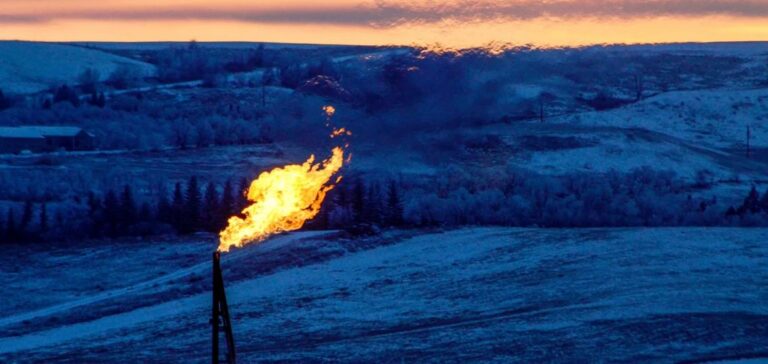The U.S. Department of Energy is preparing for a significant increase in demand for natural gas, driven by an exceptional cold snap in the Northern Great Lakes and New England regions. From the beginning of April, freezing temperatures from southern Canada will drive gas prices up sharply, particularly in the upper Midwest and New England, where spot markets already recorded a significant increase on April 1.
Impact of weather conditions on heating demand
This unusual weather situation, marked by isolated snowfalls evolving into widespread snowstorms between April 2 and 3, should not only increase heating demand but also influence gas storage levels. AccuWeather forecasts snow accumulations ranging from 3 inches to 2-3 feet in remote and mountainous areas, exacerbating energy demand for heating in these regions already predisposed to severe winter conditions.
Rising gas demand in the Midcontinent and Northeast
Data from S&P Global Commodity Insights anticipate a surge in gas demand across the Midcontinent, with population-weighted average temperatures dropping as much as 8 degrees Fahrenheit below normal. This trend could push gas demand into the low 19 Bcf/d range by mid-week, surpassing the 18.6 Bcf/d average recorded for the whole of March. Similarly, in the Northeast, the onset of cold weather is expected to bring the daily weighted average temperature down to 8 degrees below normal, with gas demand, excluding LNG exports, exceeding 22 Bcf/d between April 4 and 6.
Impact on gas prices and inventories
This increase in demand and the consequent rise in US gas prices could slow down the start of the injection season, at a time when natural gas storage levels are being closely scrutinized by market players. For the week ending March 22, the EIA reported a net drawdown of 36 Bcf in US inventories, highlighting the impact of weather conditions on the country’s natural gas reserves. With stocks estimated at 528 Bcf in the Midwest and 387 Bcf in the East, well above the five-year average, managing these reserves is becoming crucial in the face of fluctuating demand driven by unpredictable weather conditions.
In response, the market adjusted its prices, with notable increases observed in Chicago and the Northeast, highlighting the complex interplay between weather, energy demand and the economics of the natural gas market. This dynamic underlines the crucial importance of efficient planning and management of energy resources, particularly in view of the challenges posed by the transition to more sustainable energy sources.






















